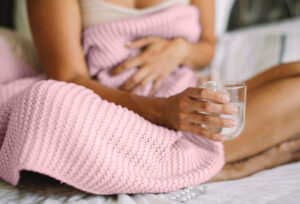
10 Nutrition Tips for Pregnant Women
During your pregnancy, you’re eating for two. That means you need to eat more, and you need to eat better. As a result, your diet
A vaginal yeast infection is a fungal infection that causes irritation, discharge and intense itchiness of the vagina and the vulva. Also called vaginal candidiasis, vaginal yeast infection affects up to 70% of women at some point in their lifetime. Over-the-counter medications can effectively treat most vaginal yeast infections.
Yeast infection symptoms can range from mild to moderate, and include:
• Itching and irritation in the vagina and vulva
• A burning sensation, especially during intercourse or while urinating
• Redness and swelling of the vulva
• Vaginal pain and soreness
• Vaginal rash
• Thick, white, odor-free vaginal discharge with a cottage cheese appearance
• Watery vaginal discharge
Most yeast infections can be treated with over-the-counter medicines available from a drug store without a prescription. They usually come in the form of an antifungal cream, or suppository. Depending on the treatment, it can take one to seven days to be effective. If symptoms do not resolve with the use of over-the-counter remedies, you may need to follow up with a HealthLynked provider. The provider can prescribe therapies which include a one-day pill and evaluate for other infections.
Yeast infections are usually caused by an overgrowth of a fungus called Candida albicans. The overgrowth of this fungus is the result of a disrupted vaginal environment. This disruption can be triggered by antibiotics, diabetes, changes in hormones or weakened immune system. The most common hormonal changes occur from menopause, pregnancy, contraception use, and sexual activity. When the vaginal environment is disrupted, it means that the protective vaginal bacteria known as Lactobacilli are depleted in number. Lactobacilli produce lactic acid which prevents infections caused by the overgrowth of bacteria or fungus. When the protective lactobacillus microbe population is disrupted, the fungus levels can increase leading to candidiasis.
To reduce your risk of vaginal yeast infections, wear underwear that has a cotton crotch and doesn’t fit too tightly. Synthetic fabrics like polyester and nylon trap heat and moisture which is an environment that can allow bacteria and fungi to thrive. Another thing to keep in mind is your vagina’s pH balance. A disrupted vaginal pH can contribute to several vaginal problems, including yeast infections. Scented products such as period products or detergents can affect your pH, so these should be avoided. You should also avoid douching. It might seem like a good tactic to clean your vagina, but you’re killing the good bacteria inside your vagina that help fight off infections. Clean the vulva with water and maybe some gentle soap, but the vagina should be left alone, unless told otherwise by a medical professional.

During your pregnancy, you’re eating for two. That means you need to eat more, and you need to eat better. As a result, your diet

Periods. The word alone can cause anxiety. If you have PMS, the anxiety can be multiplied by 10. The only thing worse than your period
One of the most natural occurrences for women is their period. For many women, however, it can be hard to know what’s going on with
Copyright © Oohvie 2024 . All rights reserved. | Privacy Policy | Terms & Conditions


